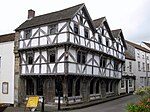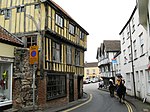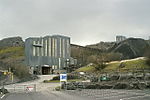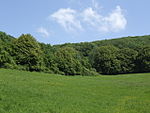Axbridge railway station

Axbridge railway station was a station on the Bristol and Exeter Railway's Cheddar Valley line in Axbridge, Somerset. Axbridge was one of the principal stations for the transport of strawberries, which led to the line's alternative name as The Strawberry Line. The station was opened with the broad gauge line to Cheddar in August 1869 as a two-platform station. The railway was extended to Wells in 1870, converted to standard gauge in the mid-1870s and then linked up to the East Somerset Railway to provide through services from Yatton to Witham in 1878. All the railways involved were absorbed into the Great Western Railway in the 1870s. This in turn was nationalised into the Western Region of British Railways on 1 January 1948.
Excerpt from the Wikipedia article Axbridge railway station (License: CC BY-SA 3.0, Authors, Images).Axbridge railway station
Cheddar Road, Sedgemoor
Geographical coordinates (GPS) Address External links Nearby Places Show on map
Geographical coordinates (GPS)
| Latitude | Longitude |
|---|---|
| N 51.288349 ° | E -2.816319 ° |
Address
Axbridge
Cheddar Road
BS26 2AE Sedgemoor
England, United Kingdom
Open on Google Maps









